#bullet-proof software
Explore tagged Tumblr posts
Text

'Drift King Shutokou Battle 2: Tsuchiya Keiichi & Bandou Masaaki'
[SFC] [JAPAN] [MAGAZINE] [1995]
"Keiichi Tsuchiya (土屋圭市, Tsuchiya Keiichi, born January 30, 1956) is a Japanese professional race car driver. He is known as the Drift King (ドリキン, Dorikin) for his nontraditional use of drifting in non-drifting racing events and his role in popularizing drifting as a motorsport. In professional racing, he is a two-time 24 Hours of Le Mans class winner and the 2001 All Japan GT Championship runner-up. He is also known for touge driving. The car he drives, a Toyota AE86 Sprinter Trueno, has become one of the most popular sports cars; the car is also known as "Hachi-Roku" in Japan (hachi-roku meaning "eight-six"); his car is also called "The Little Hachi that could." A 2-part video known as 'The Touge' produced by Pluspy (styled as +P) documents Tsuchiya's touge driving with his AE86. He was a consultant for the popular manga and anime series, Initial D, of which the main character Takumi Fujiwara is a character which describes him. He also served as a stunt coordinator and stuntman on The Fast and the Furious: Tokyo Drift, where he also made a cameo appearance." ~Wikipedia
Source: Jugemu Magazine, May 1995 || Internet Archive; ozidual
#gaming#advertising#ドリフトキング首都高バトル#Drift King Shutokou Battle 2#Tsuchiya Keiichi#licensed#racing#street racing#super famicom#genki#bullet-proof software#japan#video games#1995
18 notes
·
View notes
Text
Last year in classic games

For motives I cannot expand on with much glee, I found a little more time than usual this year to reduce my seemingly endless backlog of classics. Despite all the fine new releases 2023 has greeted us with, I was able to finally dive into this eclectic handful of games I gathered over time. It is perhaps no coincidence that I reached out for more direct game experiences than story-driven ones. I find myself increasingly drawn to games designs that are mindful of the player's time as a commodity not to be carelessly squandered.
One note, if I may: I would like to inspire my readers to progressively discard the use of the word retro this year. We are all of advancing years and wisdom, I trust. The introduction of the term retro to the videogame vernacular was a gross mistake furthering the abhorrent notion that games were as ephemeral in their nature as fashion. It is a purely commercial designation by which to profitably repackage old software as a category of its own, originating from the same minds that considered games as mere novelty trinkets of limited marketable lifespan.
It is up to the player to individually decide on an older game's appeal, whether they may be discovering it for the first time or revisiting it for the umpteenth one. This is not only an appeal for those of you who write about games in any capacity, rather to anyone who takes videogames as a serious interest and communicates with others about this the object of their predilection. Thank you.

This loose cart came with a Famicom bundle auction I won in 2009, if memory serves. I turned on the Famicom and tested it merely to verify if it was still in working condition and found myself engrossed in that trademark Pajitnov/Pokhilko elegant approach to game design. As per the cassette's label, Hatris was originally a concept developed in collaboration with ParaGraph, a Russian studio that went on to develop specialized professional software, a year before the Bullet-Proof Software licensing deal. They produced a few games in the turn of the decade that were rather unusual and, some would say, even visionary. I recommend that you look up their story, if you're curious.

The only entry from the group that isn't of Japanese provenance - though it is a Japanese edition - I played it for purely nostalgic motives, perhaps a yearning for a certain pixel, palette and parallax that resoundingly evoke a time I was fortunate enough to experience, first-hand. If I may be honest, I purchased the game for the visual value of its unique cover art, which I deem superior to the US edition's. In saying that, I must highlight that the original Amiga game box art was quite accomplished.

In the Summer of 93 while on holiday at the beach, there was a French Nintendo magazine for sale whose purchase I could not resist. It was very common to find Spanish, English and French publications at the time in Portugal. This edition had a striking four page preview of this Jaleco gem, Ikari no Yōsai, or Operation Logic Bomb as it was named in the West. For years I searched the PAL version in vain, then ultimately decided to import it on account of - you'd never guess! - the superior box art. Playing it this year at long last, I was instantly reminded of an old Game Boy favourite, Fortified Zone, which I now know to be its prequel. Most top-down shooters are best played in co-op. Ikari no Yōsai is strictly and single-player affair and not once did I miss the absence of a friendly companion.

Keio Flying Squadron 2 first came to my attention via an infamous Saturn demo disc, which came into my hands through circumstances I have since forgotten about. I use the word infamous because the entire game code was available in the disc and the level select cheat code enabled me to unscrupulously play the entirety of the game for no additional expense - at only the cost of missing out on the colourful Studio Pierrot anime FMV interludes.
Having played the sequel first, I was somewhat disenchanted to learn the original game did not feature any platforming segments, it being a pure scrolling shooter in the same whimsical vein as Parodius or, say, an AirZonk. Still, a jolly good time with the old three buttons.
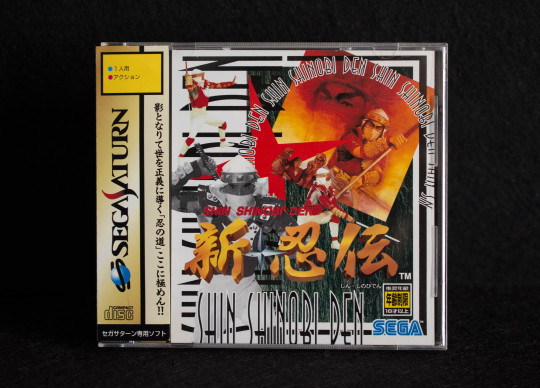
For reasons that will not be immediately apparent to younger reading audiences, I pride myself in having completed most Shinobi games, The Revenge Of and GG being my preferred ones. Shin Shinobi Den, or Shinobi X in Europe, was a game not readily available from my usual game dealers. I eventually borrowed the PAL version once, though not nearly long enough to master it. I finally saw it through this year, mere days before SEGA announced a new episode. While the live action clips looked a tad maladroit in the 1990s, they came to acquire that nice patina I now look for in classic games.
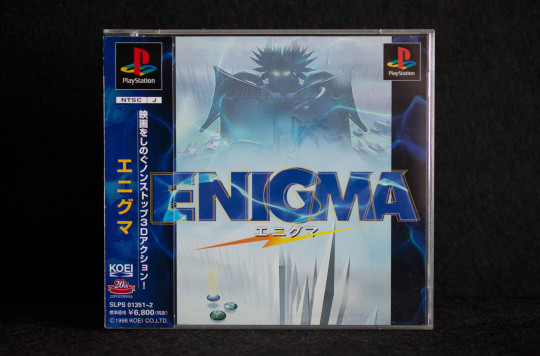
Omega Force was known to take the sporadic breather from producing some of KOEI's most cherished and profitable series. I distinctly remember enjoying Destrega quite a bit in its day, a game quite unlike any other. What their 1998 Enigma lacks in consistency and originality, it more than amply makes up for with its own bizarre concepts, extravagant characters and unexpected genre fusions. Of all the titles in this post, this was the one whose pace felt the most sluggish, and needlessly so.

Microsoft Game Studio Japan release schedule plans were not at all kind on this, their first production, Magatama. Earlier this year I praised this era for its highly inspired H&S action adventure titles and even spent a few days delighting myself with the likes of Blood Will Tell, Nightshade, Bujingai, or Chaos Legion. This most unusual creation, developed by the aptly-named Team Breakout - a group composed of many talented ex-Square employees - is one among the finest of the era. Sadly, it did not do enough to persuade players at the time that it was a better purchase than Otogi or its sequel. Playing it with my mind and heart set back in time to 2003, I can say that this misguided consideration may not have withstood a second thought.

I've long wanted to write an extensive article on Japanese firefighting games. In fact, I have the structure laid out for a Japanofiles entry gathering moss in my Tumblr drafts for over a decade now. For a brief period this year I convinced myself I could finally fulfil this aspiration and resumed Sakurazaka Shouboutai as research. Developed by Racdym - later Racjin - for Irem, it is every bit as good as Firefighter F.D.18 or Hard Luck, and in many ways more inventive from a conceptual standpoint. While Konami and Spike found a way to have their games released in the west, Sakurazaka's poor regional sales performance clearly accounts for Irem's reluctance to bear the cost of an overseas ticket.
#hatris#paragraph#bullet-proof software#wolfchild#mega cd#Ikari no Yōsai#operation logic bomb#fortified zone#jaleco#super nintendo#keio flying squadron#victor entertainment#shin shinobi den#shinobi x#shinobi legions#sega saturn#enigma#omega force#koei#magatama#xbox#Sakurazaka Shouboutai#irem#racjin#racdym
35 notes
·
View notes
Text
youtube
#Obitus#SNES#90s Gaming#Super Nintendo Entertainment System#Super NES#RetroGames#90s Games#Classic Games#Retro Gaming#90s#Retro GamePlay#Action Adventure#Action Game#Adventure Game#Adventure Games#Action Games#Scenario Developments#Bullet-Proof Software#Psygnosis#Youtube
1 note
·
View note
Text
V-Tetris
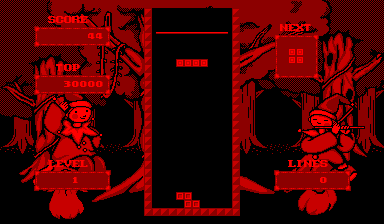
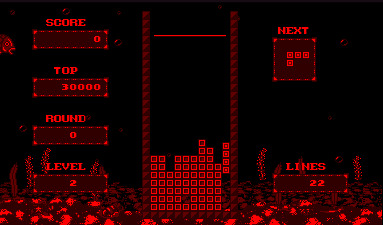
V-Tetris Locomotive / Bullet Proof Software Virtual Boy 1995
33 notes
·
View notes
Photo
I love this cover. This is like beautiful abstract art.

Pipe Dream (NES)
5 notes
·
View notes
Text
+005: Tetris Forever is marketing disguised as a documentary

CANON FIRE is made possible by the generous contributions of readers like you. Support more writing like this on Patreon. Thank you!
The latest in Digital Eclipse’s game/documentary hybrids, Tetris Forever presents a view of history that omits so much it’s nearly historical revisionism. Ironically, for a documentary about a Soviet export, Tetris Forever is more concerned with its capitalist success than anything else.
Multiple chapters are spent on the saga of Henk Rogers’ acquisition of the rights to the game, the business deals that led to its financial success, and the total ownership that the Tetris Company finally achieved.
Rogers talks about buying out the remains of the Soviet ministry of computer technology, shutting down a successful Tetris clone keychain, taking ownership of Bombliss from designer--and Pokemon founder--Tsunekazu Ishihara, and it's presented as if they were inspirational stories, not ruthless business decisions. He even adds that he paid Ishihara 100 Yen per unit, “because it was the right thing to do”, even though he legally didn’t need to.

Tetris Forever’s narrative is not the story of Tetris, but the Tetris Company. It’s a story of great men doing great things, mythmaking for people who have very literally already bought in. You can see it in the collection’s roster of games, which only includes titles developed by Bullet Proof Software, games that Rogers had a hand in directly, and are outright owned by the Tetris Company.
For as much as they hype up the Game Boy as a key to the Tetris’ worldwide success, its absence leaves a gaping hole in what’s supposed to be a historical collection. Even if it's already well known to many, its absence makes it hard to take Tetris Forever seriously as a historical archive.

Alongside Tengen Tetris, which they fought a protracted legal battle to bury, and NES Tetris, which has exploded in popularity recently with a number of world records, a growing competitive scene and a recreation in Tetris Effect, there’s several milestone releases that are not only not playable, but not given little focus in the documentary.
The greatest of these omissions is easily SEGA Tetris. While Tetris dominated the console space in the West, SEGA’s arcade entry was highly influential in Japan, becoming the de facto representative of the series there, spinning off into competitive entries, and becoming the groundwork for several fan games of the time, and eventually Tetris the Grand Master.
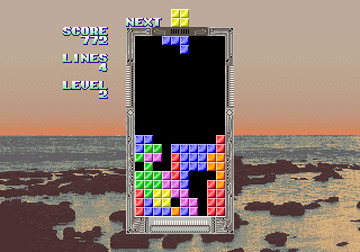
Together with TGM, SEGA Tetris would play a huge part in defining the “feel” of Tetris. Mechanics like lock delay, ghost pieces and wall kicks were created here, in arcades, then rolled into the official Tetris Guideline, the blueprint of what a modern Tetris game should look like. Rogers himself has said as much in other interviews.
In leaving out those entries, Tetris Forever buries a slew of other stories. The stories of how a collaboration between ex-Street Fighter devs and Japanese comedians would change the series forever, how feedback from an office lady led to a game defining mechanic, and how the game would make an international name for itself years after its release due to streaming.

Instead SEGA Tetris is limited to a single paragraph, a short video of Tetsuya Mizuguchi talking about watching it in arcades, and a summary basically saying “it’s influential” TGM and Arika are given even less, with the only comment being that TGM is known for its speed. It’s about the same level of attention as they give to the times they made Tetris cabinets that were REALLY BIG.
And where are the stories of the NES game champions? THe ridiculous limitations that make the NES version uniquely difficulty to play, the absurd techniques that players developed to get around the physical limitations of the controller they play with?
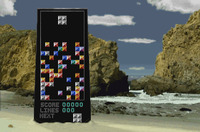
Where are the showcases of speedruns and high level competition? Why aren’t there interviews with the devs of different titles, like the experimental N64 entries from H2O Entertainment, or the composer of the CDI Tetris? Digital Eclipse had a chance to showcase the diversity of people and ideas that have touched Tetris, but all of that is barely mentioned, if at all.
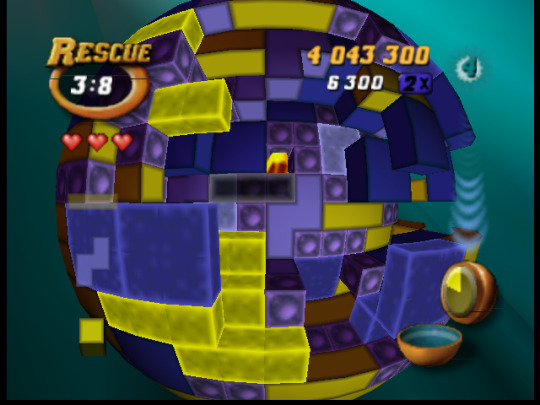
Licensing was surely a factor here, but as Tetris Forever points out, the Tetris Company has fought many battles over rights. Why stop when it's time to tell your story?
Instead what we get itls historical revisionism by exclusion. A story canonizing what we already know, and leaving out the contributions of the many hands that have touched the game in the decades since its success.

Tetris Forever would have you believe that's Tetris’ success is the story of Alexi Pajitnov discovering a diamond, and Henk Rogers convincing everyone it was valuable. But a gem's value isn't in its raw material but the refining process--something I'm sure the son of a gem merchant like Rogers would know.
Tetris’ refinements have come as a result of decades of community contributions. From fans making works in both official and unofficial capacities. Tetris is the story of a conversation between a game and its players. It's a cultural phenomenon built by many hands.
Perhaps, comrades, that's the real legacy of what they once called THE SOVIET MIND GAME.
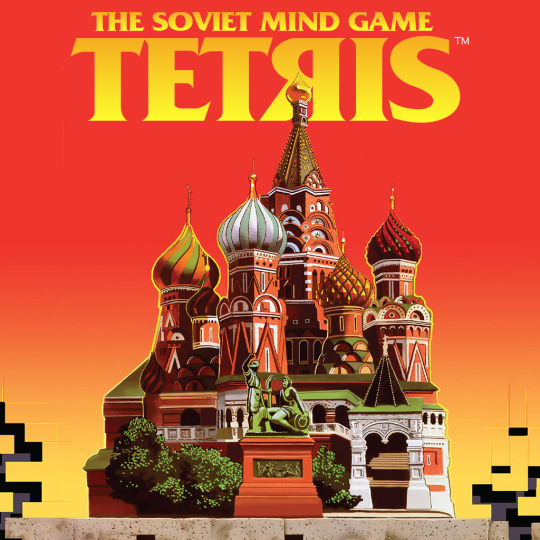
22 notes
·
View notes
Text
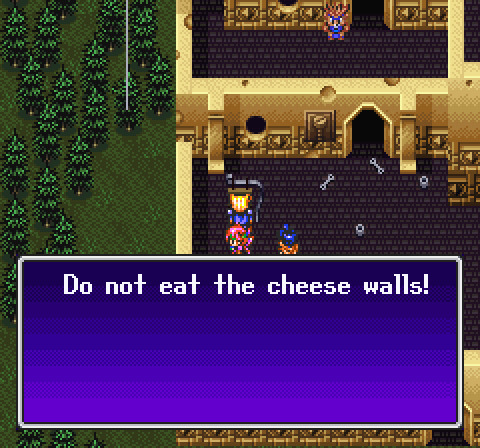
The Magical Land of Wozz (1995, Bullet Proof Software). English translation patch by Nightcrawler’s Translation Corporation.
#The Magical Land of Wozz#Choumahou Tairiku Wozz#JRPG#SNES#Super Famicom#Super Nintendo#90s#retro games#retro gaming#screenshot#screencaps#Fami's junk
171 notes
·
View notes
Text
Family Computer - Tetris (BPS)
Title: Tetris / テトリス
Developer/Publisher: Bullet-Proof Software
Release date: 22 December 1988
Catalogue Code: BPS-T0
Genre: Puzzle

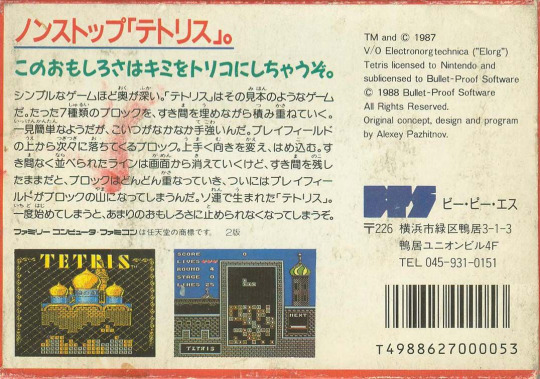
Three versions of Tetris have appeared on the Nintendo Entertainment System (not counting the Tetris 2 sequel [aka Tetris Flash] that has little to do with actual Tetris outside of the name and certain block formations). Most of you already know about the official release by Nintendo, and some of you are probably aware of the unofficial release by Tengen, which is part of a well-known legal controversy regarding Tetris. However, seldom few people know about the version of Tetris developed by Bullet-Proof Software (BPS) and the reason for this is that the game has never been (officially) released anywhere outside of Japan. It was also the first version of Tetris to be released on the Famicom, predating the Tengen-published and Nintendo-published versions by about a year or so. It saw PC releases on the MSX, Fujitsu FM-7, Sharp X1, Sharp X68000, NEC PC-8801, and NEC PC-9801. BPS Tetris, which is the very first version of Tetris released on the Nintendo Famicom (or NES), was one of those games that would be featured on a variety of pirate multicarts that used to cost approximately $200 or so back in the day. Unless you imported a Famicom, this would have been the only means of playing this game back then.
Compared to the other NES releases of Tetris, the graphics in BPS Tetris are actually fairly crude but decent. The main playing screen has some nice Russian-themed background art that doesn't really do much, but is still nice to look at. The title screen and lone intermission screen are also rendered well. However, there's ultimately no variety, and there comes a point where staring at the same Russian spire is going to be sleep-inducing. At the very least, the game isn't ugly to look at. As far as audio goes, there are three different music tracks to choose from: Technotris, Karinka, and Troika. They're all of decent quality and have a techno beat to them. The latter two songs are also featured in the Tengen version of Tetris released years later. This game is also the first time we hear the Tetris theme, which would be featured in countless iterations of Tetris in later years. Aside from that, the sound effects used in the game are minimal and functional; nothing outstanding or anything. They're just there.
Gameplay here is somewhat primitive compared to later Tetris releases, but otherwise remains the same; you have to clear the chamber of blocks by forming lines, which will cause the blocks to disappear. Clear 25 lines to move on to the next level. The higher the level you're at, the faster the blocks fall. However, once you clear Level 9, you loop back to Level 0, but now the level of garbage blocks has risen. Unlike later Tetris games, you have three lives to proceed forward, and your score is only gauged after the current play session has ended (either in victory or defeat). For the most part, Tetris gameplay is fairly familiar… almost.
Controls in this game are mapped awkwardly. Press Left or Right to move the Tetrimino, Up on the D-Pad to rotate, and press the A button to perform a hard drop (dropping the piece in place down to the well). And that's it. There's no way to "soft drop" a piece slowly (a function available in the very next release by Tengen) and thus you're left to either wait until the piece reaches the bottom of the well or you take a chance, press the button, and hope the piece fits in the right spot.
To sum it all up, BPS Tetris plays more like some of the early PC versions of the game as far as the gameplay mechanics go, which does explain the fact that BPS Tetris had been released on Japanese PCs before this Famicom port. And if you've never played any of those versions, you'll have to learn to adjust to the control scheme in this game… but once you do, the game plays decently enough… although it's easy to forget that A Button drops the piece into place.
Given that it's one of the earliest incarnations of Tetris you'll find on a video game console, BPS Tetris is certainly worth a look just to see how far the Tetris brand has gone. And indeed, this variation of the classic puzzle game can actually be quite fun once you get into it. However, if you're new to Tetris or are looking to start off somewhere, this isn't the version to get. It's a barebones package with limited options and primitive play mechanics that only experienced Tetris players and even those who value a good challenge will get any semblance of enjoyment out of it. I enjoyed playing this game tremendously, but others might not. Still, it's worth a look only for curiosity's sake.

youtube
7 notes
·
View notes
Photo

'Chō Mahō Tairiku Wozz' - an RPG developed by RED Entertainment and published by Bullet Proof Software. This is the manual cover.
127 notes
·
View notes
Text
Nintendo Switch Weekly Round-Up for the Week Ending November 16th, 2024
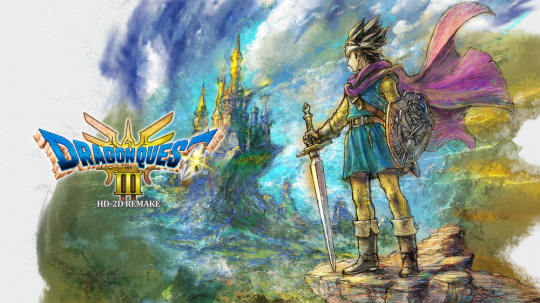
Hello gentle readers, and welcome to the Nintendo Switch Weekly Round-Up for the week ending November 16th, 2024. Lots of interesting games to look at this week, and those who enjoy the classics are especially well-served. Dragon Quests, Tetrises, Yses, and even a relatively obscure NEOGEO fighter. We even have a game published by PlayStation, which is a first for a Nintendo platform. Neat. Let's check out this week in the world of Switch!
Featured New Releases
Dragon Quest III HD-2D Remake ($59.99)

The fancy new HD-2D remake of Dragon Quest III arrived this week, and while the Switch version is the least technically-proficient option, it's good enough to do the job. I really enjoyed this version of the game, and if you are on the lookout for a nice classic-style RPG you really can't go wrong here.
Tetris Forever ($34.99)

This is the latest in Digital Eclipse's Gold Master series, covering the well-trodden story of how Tetris came to be. It includes a bunch of Tetris and Bullet-Proof Software games, but very little outside of the ones the Tetris Company owns outright. So don't expect Game Boy Tetris or Tengen Tetris, because they aren't here. The documentary content is worth it, and if you give the games a shot I think you'll find something to like there too.
The Rise of the Golden Idol ($19.99)
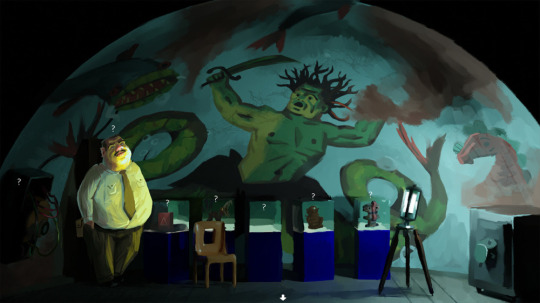
If you enjoyed the superb adventure The Case of the Golden Idol, you'll almost certainly want to dig into its follow-up, The Rise of the Golden Idol. Solve twenty strange cases using your powers of observation and deduction. It's good stuff, as you would expect.
LEGO Horizon Adventures ($59.99)

The very first PlayStation-published game on a Nintendo platform is perhaps not the monumental one such an occasion would ideally offer. This spin-off of Sony's popular Horizon franchise retells the story of the first game in a more family-friendly way, and that's probably the context it works best in. It's not a bad game, but it's not going to scratch that Horizon itch if that's what you were hoping for.
Petit Island ($29.99)

You play as a little cat trying to relive her grandpaw's adventures on Petit Island. It's a place full of things to see and treasures to find, along with some interesting characters to meet. You'll need to use your camera to snap some shots of the sights, which will hopefully help jog your grandpaw's failing memory. A cute, chill little game to mess around with if you're looking for one.
Goblin Slayer -Another Adventurer- Nightmare Feast ($39.99)

Here we have the first console game based on the popular Goblin Slayer property, and it's a tactical turn-based RPG. It is not a particularly great one, but it's functional enough. I think if you like Goblin Slayer, you'll have enough fun with this to make it worth your while. If not, I think you can find better games in this genre to play. Probably cheaper, too.
IREM Collection Volume 2 ($24.99)
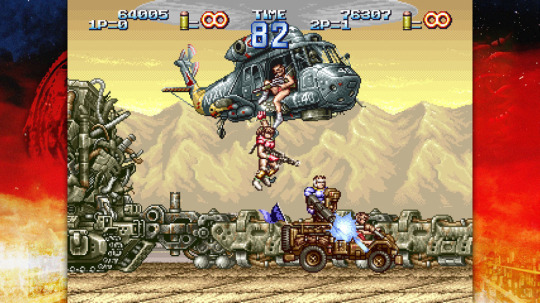
Time for another Ratalaika-developed collection of Irem arcade games. This one has the vertical shoot 'em up Air Duel and run-and-gun action games GunForce and GunForce II. You also get the Super Famicom version of GunForce. This set arrives in better shape than the first volume launched in, though the included GunForce II has some unusual flicker that isn't present in the original game. Not really a deal breaker. I'll be reviewing this soon.
Rage of the Dragons NEO ($19.99)

The Double Dragon franchise was an absolute mess in the twilight years of Technos Japan, with very little consistency from title to title. Somehow, a one-on-one fighter based on the movie was made for the NEOGEO. It wasn't very good, but it wasn't bad. Good enough to earn a follow-up, but one that would file off the serial numbers and go on without the license. Like, barely filing off those numbers. QUByte handled this but it's one of its better jobs, so that's nice. It has online play but no cross-platform support, so enjoy that ghost town.
Little Big Adventure - Twinsen's Quest ($29.99)
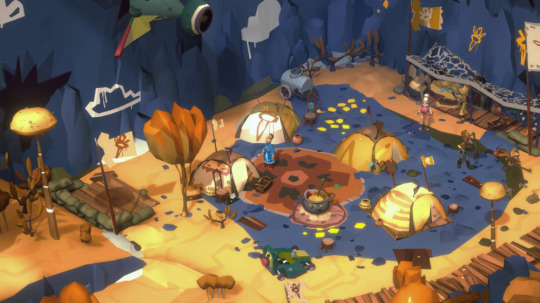
This is a remake of the original Little Big Adventure, and despite some extra bugs coming along for the ride it manages to capture much of the charm of that game. It's an action-adventure game played from an isometric perspective where you use a Magic Ball to do a variety of things. With this being a Microids release you can probably wait for a discount, but I think it's a fair effort for what it's asking. We've seen far worse from this publisher.
Arcade Archives Konami's Table Tennis ($7.99)

Oh boy, Konami's Table Tennis. You might know this as Ping-Pong, and if it looks familiar then it's possible you've run into it in its NES/Famicom guise. It's a fine enough game for its age, but you can probably get your fill of this on the Nintendo Switch Online NES app if you're a subscriber.
EGGCONSOLE Ys MSX2 ($6.49)

No, your memory isn't failing you. We've already seen Ys release in the EGGCONSOLE line. But that was the PC-8801 mkII SR version, and this is the MSX2 version. There are differences, but unless you're a fanatic I can't see a reason to buy both. It's entirely in Japanese, just like the last one. I imagine we'll see the second game's MSX2 version before long.
Great God Grove ($19.99)

This… is a weird and lovely game. You play as the mail carrier of the gods, and you solve puzzles by sucking up speech bubbles and tactically deploying them. You'll meet a ton of characters, and they've got some serious personality. If you like adventure games, I'd strongly recommend giving this a look. I'm going to review it over on the TouchArcade Patreon soon if you need more details.
VED ($24.99)

If I awarded full points for style, this would get a very high score indeed. It's got a slick look to it. The turn-based combat is a little limited at first, but eventually opens up into passable fare. But this is a story-driven game, and I think it's going to live or die for each player based on how much they like its narrative. I did not care for its narrative. You might, though! An effort was certainly made.
Debut Project: Cooking Cafe ($29.99)

From the look of the game and the price its charging, one might hope for a decent Cooking Mama-style affair. Alas, this isn't anywhere near as good as Cooking Mama. The minigames are repetitive and not very satisfying, and that's pretty much the game. I'd avoid it, personally.
Mindcop ($14.99)
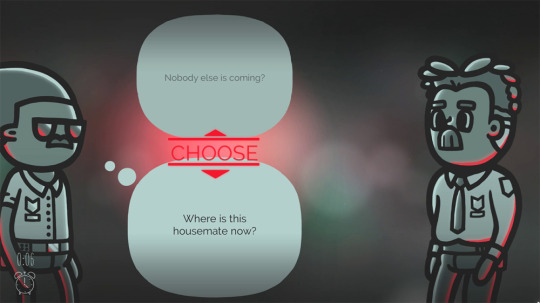
Wow, another good mystery adventure game this week? We're being spoiled. In this one, you'll enter into people's minds to find clues and solve dastardly murders. There's a bit of abstract puzzle solving in the mix, and you also need to manage your time carefully. You only have so many actions per day, so you can't chase down every single lead. I like it!
Heretic's Fork ($9.99)

The easiest way to describe this game is to chuck some buzzwords in the blender. Tower defense, deckbuilding, Survivors-like. That probably sounds like a mess, but Heretic's Fork mostly works. You're the new manager of Hell and you need to construct towers to punish sinners. It gets old a bit faster than, say, Vampire Survivors, but I think it makes a good run of things.
NAIRI: Rising Tide ($14.99)

Here's the next game in the NAIRI series, and I'm going to do the lazy thing here and say that if you enjoyed the first, you should check out the second. If you didn't, I don't think this will change your mind. If you haven't played the first game at all, you absolutely shouldn't start here. The story picks up where the first left off, and its ending points towards at least one more game. Lots of puzzles to solve, very much in the vein of what you would have seen in the previous title.
MONPIC -The Hatchling Meets a Girl- ($8.99)
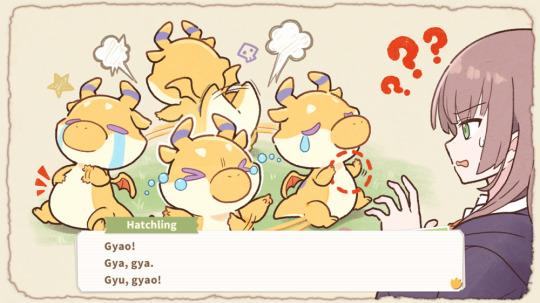
This is a point-and-click style adventure game about a girl and a baby dragon. If you're here for the cute, this game delivers the cute. That's about all I'm qualified to speak on with this game, as I haven't had a chance to play it yet.
Bullet Runner ($16.99)

This is a top-down run-and-gun action game that puts an emphasis on the mayhem, much to its benefit. Lots of guns, lots of set pieces, and lots of explosions. If that's what you're after in a game, I imagine you'll find some satisfaction with this one.
49 Keys ($9.99)

A Lovecraftian puzzle adventure based on an actual gamebook. The game leans into that, and everything unfolds in a book set on a table in front of you. Lots of text, the occasional picture, and icon-based interactions for solving puzzles. Solid enough for what it is, just be aware of what you're getting into.
Deserted ($19.99)

A survival-ish game that apparently is thematically inspired by Another World. There are some things about it I like, particularly with regards to its art style. Unfortunately, it has so many rough edges it could pass for a chunk of amethyst. No, I don't know why that was my go-to for a comparison either. But they're pretty spiky, I assure you. You wouldn't want to step on one, and you also wouldn't want to step on Deserted.
Slam and Roll ($14.99)

Do you like Snow Bros.? Do you like the idea of Snow Bros. but without Snow Bros.? Maybe swap those Snow Bros. out for a couple of kids in sports gear? Then you'll want to check out Slam and Roll. It's a slick little elimination platformer. If that's a genre you're into, I think you'll enjoy this.
Doors: Paradox ($14.99)

I liked this one on mobile, and I still like it here. It's an escape room style affair with puzzles to solve that mainly come down to using this with that on the other thing. What makes it stand out is that each of the "rooms", and there are almost sixty of them, is a 3D diorama that you can spin around and poke at. A good presentation and some enjoyable puzzles to unravel.
Carpathian Night Starring Bela Lugosi ($16.99)

How do you help your Castlevania homage stand out in the small crowd of Castlevania homages? Well, you can license the likeness of Bela Lugosi to use for your Dracula, I suppose. I can be a bit harsh on Castlevania-inspired games, and I'm going to be again here. It's okay. It's no Castlevania. I think the price is pushing it a little, but it feels rude saying that considering the developer probably worked on this for years. Anyway, it scratches an itch Konami hasn't been scratching lately, but I'd rather just replay a proper Castlevania.
Dorfs: Hammers for Hire ($14.99)

A massive army is on the march, but what's happening on the battlefield is someone else's problem. Your problem is filling all the orders the soldiers need, and that's the basic idea of this wild party game for up to four players. It has just enough of a whiff of Overcooked about it to fill in for a party night or two if you need something new in that capacity to play. It's pretty hectic though, so I'm not sure if less experienced players will be able to slide into it and have a good time as easily as all that.
Matsuro Palette ($9.99)

You're trapped in a studio with a cursed painting for seven days. The girl in the painting is counting on you to paint her portrait in that time, but if you upset her in the slightest she'll kill you. You'll have to pay attention to the notes left by her past victims and figure out how to survive. It'll only take you a few hours to finish it, but it's a memorable few hours.
Miniatures ($5.99)
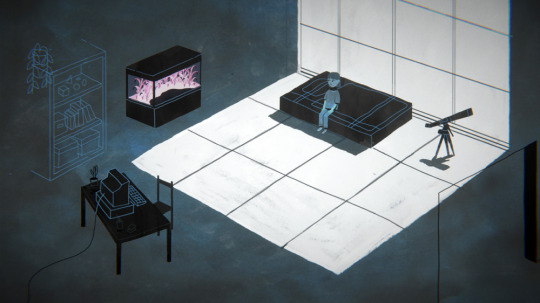
This game looked interesting when I was preparing this article, but the name makes it very hard to search for information on. Developers, choose the name of your game carefully. If doing a web search on your game's title plus the word 'game' brings up a million things that aren't your game and not your game, you messed up. Anyway, this game might be neat! Shaun of the Past thought it could be!
That's all for this week, friends. We'll be back next Saturday with another Round-Up as we head into the end of November. Next week is a little quieter, with the biggest title so far looking to be Stray. Well, we'll make what we can of it. As ever, I will plug both my Patreon (where you can find lots of cool exclusive articles) and my Ko-Fi (tips help me run this blog). There, plugged. I hope you have a super Saturday, and as always, thanks for reading!
2 notes
·
View notes
Text
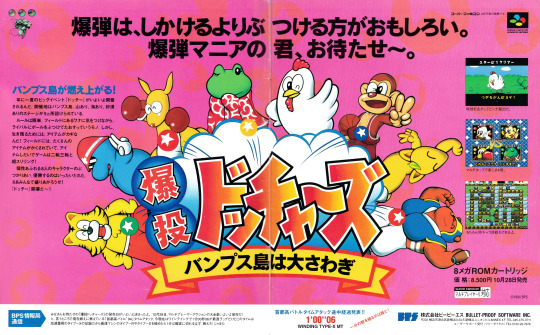
'Bakutou Dochers: Bumps-jima wa Oosawagi'
[SFC] [JAPAN] [MAGAZINE, SPREAD] [1994]
"Bakutou Dochers is a Japan-only action game for up to four players. It superficially resembles Hudson's Bomberman series, with its top-down grid stages and chaotic gameplay, but rather than leaving bombs and waiting for them to explode, the player can shoot energy at blocks and each other. The goal is to sneak up behind the opponent and shoot them before they can reciprocate. Various power-ups may appear after destructible blocks are removed, which can give the player an edge or, in the case of the ? icon, a possible random negative effect like reversed controls. There are also wandering monsters that can cause damage to anyone they come in contact with. Every combatant has a health bar which depletes at a rate dependent on the attacks they are getting hit by. The single-player mode involves fighting through various worlds and removing all enemy combatants from the field to progress." ~IGDB
Source: The Super Famicom, 9/16/1994 (Vol. 5, #16) || Internet Archive; Mittermeyer
#gaming#advertising#bakutou dochers#爆投ドッチャーズ バンプス島は大さわぎ#action#puzzle#super famicom#anthropomorphic#genki#bullet-proof software#top-down#japan#spreads#video games#1994
5 notes
·
View notes
Text
Would be a pity Markus suddenly having these episodes where shit glitches so much he do the same shit from that anim in From the Dead. Like, even after fixing himself in the landfill.
I just don't know how, it's easier making it a software issue but...no?
Idk that well how .45s in short distance would behave in an android's head, after all they're made of plastic not meat, but the way he just got another eye and audio processor without any issues with the slots contacts or even thirium leak...
.45s are slow but got punch from close distances. It's a quite big boy so in theory the bullet either is still there somewhere inside his head or it got out by the eye slot when he got thrown in the landfill cuz there ain't no exit hole in his head.
Even if he leaked a lot from when he got shot, to the landfill until waking up we would get warnings about low levels. Dude indeed lost thirium as we know by Time to Decide but not in a critical level.
He was out for, like, almost 5hrs.
In theory the componets got broken in the slot and when the machine threw him off that height it may have forced the broken pieces out.
How the fuck he ain't got no issues with the slot when the .45 should've damaged it? He just get some components back and everything is fine.
And how his regulator could've gotten critically damaged from a simply throw? That's not how it should work, it gotta sustain impact inside.
What the actual hell got damaged in the regulator? The i/o? The glass/plastic? Androids are water proof so i don't think water fucked with any of the component contacts...it shouldn't?
But first of all... what happened before they taking him to the landfill? Destroyed androids are like trash so i guess they just threw him in a garbage space for androids until a truck took him to Veta. Also the way his lower legs just got broken, bro. One of 'em got really broken not detached... =/
Carl lives in E Laffayete and the landfill is around Piety Hill or North End area.

I know it's totally inconsistency by cut content, i'm just trynna find a way of justifying it. If was in cut content is totally justified the way Markus ain't got any issues during the game, but without the cut content it's just weird, the same way we got a flag for a wound that doesn't exist in Jericho chapter anymore.

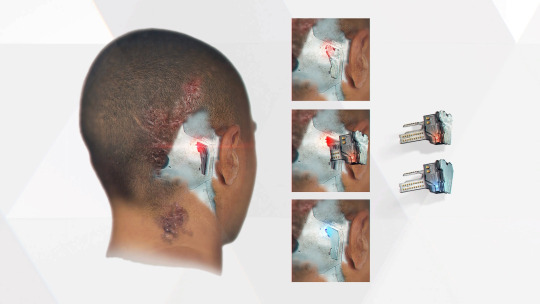

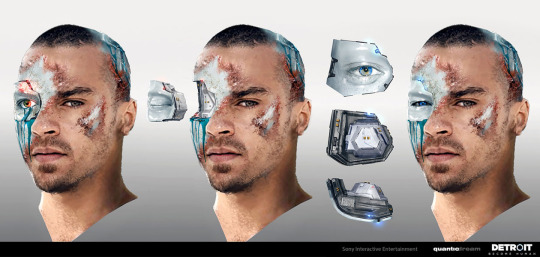





Without the cut content he should have issues with the eye and audio processor contacts also the fact depending on which .45 you're using he was supposed to have great damage inside his head. In the game is a .457 (fictional) so it must be different and more efficient at ripping insides appart, even plastic.
In my opinion he should have some issues with his eye and audio processor from time to time not cuz the components are failing but cuz his head is all fucked inside. I totally support this hc.
Without the Fight Club and Phileas plots things got a bit messy but we do what we can do. I don't think he would let Jericho folks fix him instead of the androids they've been saving, even if they got enough spare parts. But I woulda liked to see Markus being fixed in Jericho, even mfs finding out about he being a prototype etc.
3 notes
·
View notes
Text
My writing process
So a few of you have been wanting a post about my writing process and so here we finally are, I thought that I would go through it as my process is weirdly systematic even though I didn't intend it to be. For this I will be using my book 'The house of hidden miracles' as example as it is my most recent release and also a standalone so I don't accidentally spoil anything for future releases.
A little disclaimer that this is my personal process, which may not work for everyone, I advise that you look over this to pick out ideas that you think may work for you.
Planning
So I have been coming up for ideas for books long before I started publishing so I actually have a release schedule that at the moment goes as far as october of 2026 but I am aware that this is very much a me thing and you definitely do not need a schedule going that far.
Anyway so when starting the planning stage of a book I make an idea dump doc, this tends to be a page to a page and a half of bullet points to get the general idea down and is mainly my internal monologue. In this I try to identify a vibe for the book, note inspirations to look at, and an idea of main characters (you can see with a snippet of my idea dump below)
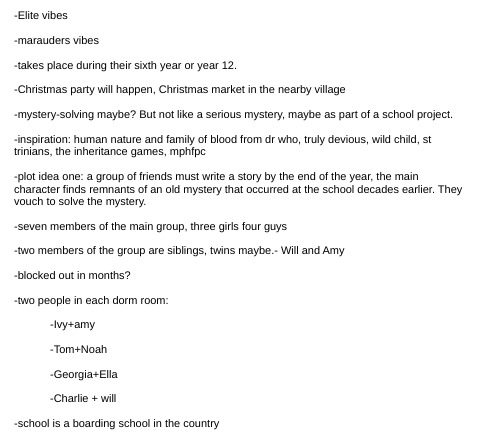
As you can see it is a little messy but it doesnt need to be final, not all of these ideas even made the final cut (for example i did not block it out in months, charlie and will were not roommates, and the christmas party turned into a solstice ball)
From there I made jamboard profiles of characters and notable locations (also i found out recently that jamboard is being shutdown soon and i am heartbroken) from here i flesh out the character properly, adding details that may not exactly be mentioned but influence the vibe when writing. An example for the main character, ivy, is below
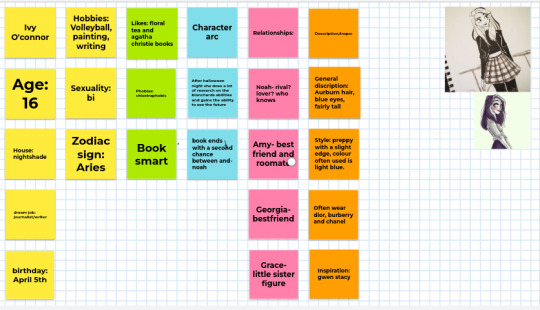
Then finally I block out chapters, first writing a general timeline of events before writing short, paragraph summaries for each chapter. Unrelated really but this also tends to be the point that I make spotify playlists for the project.

Drafting
I tend to have four or five drafts for books but there is no real set amount that you should or shouldn't have for a book. For this book in particular I actually wrote my first draft in script format but that is only effective for certain projects in my opinion.
The biggest problem I find with drafting is keeping the motivation to keep writing, I personally try to write at least 500 words a day but I know that this method is known to only work for some people. While writing I also listen to either the playlist I have created for that project, classical music, or the doctor who soundtrack (do not knock it til you try it, you will be surprised how much it hypes you up to write)
Editing
If you ask any author, editing and formatting books can be more tedious than actually writing it. I am very lucky to have a group of friends who are more than happy to proof read for me and I really reccomend getting a fresh set of eyes on your project as you will be surprised just how much you will miss.
It is during this stage that I also start working on book covers and promotion for the project, I usually use photopea for this but if you have a software that you are more familiar with.
And that is about it for my writing process, I hope y'all find this interesting and possibly a bit helpful :)
#writeblr#writers of tumblr#writing#bookish#booklr#fantasy books#creative writing#book blog#ya fantasy books#ya books#tumblr writers#writblr#writerblr#writers#writers corner#writers on tumblr#writing blog#writing community#writers and poets#writerscommunity#indie writer#indie authors#indie author#indie books#original stories#original story#original fiction#new books#book#book review
3 notes
·
View notes
Text
Henk Roger in Chile
Henk Roger (actual CEO with Axeley Pajitnov of The Tetris Company), is a Game Programmer, Game Designer, various games, and Chief Executive of game companies, he arrived in Chile for Festigame 2023 on the 12 and 13 of August! I went on Saturday and I got to know him, he could sign me some Bullet Proof Software (best known as B.P.S too) games.
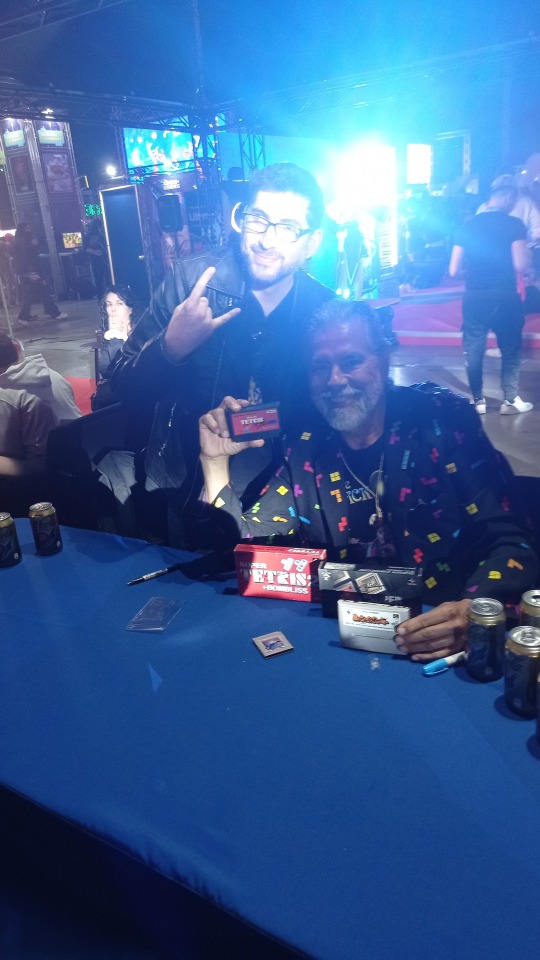
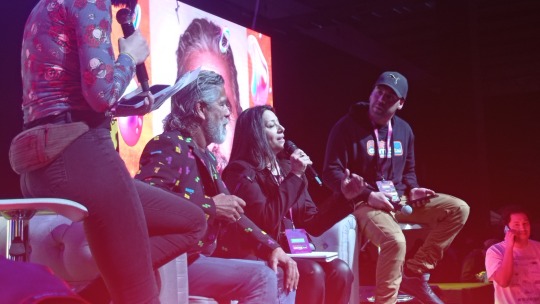

Was so fantastic his interview on the main stage of FestiGames. I will tell you the trajectory of Henk Roger before and later of Tetris.
The Birth of Bullet Proof Software
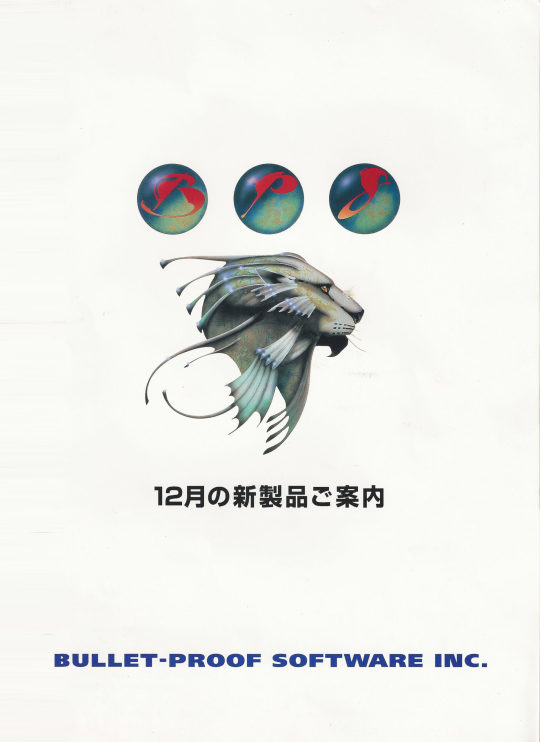
Bullet Proof Software (known as B.P.S) was an American/Japanese game Developer and Publisher founded by Henk Roger in 1983 in Japan. In the next year, the first game developed by B.P.S was Black Onyx, which was the first introduction of the RPG (Role Playing Game)/ Dungeon Crawler genre for the gamer Japanese before they developed games such as Dragon Quest (Enix), YS (Nihon Falcom) or Final Fantasy (Squaresoft).
Black Onyx had Inspiration from successful American RPGs like Ultima by Richard Garriot in 1981, and Wizardry by Andrew C. Greenberg and Robert Woodhead in 1981, obviously, those games are based on Dungeon & Dragon (a tabletop game created in 1974 by David Gygax and Dave Anderson), the original mother of all Rol Playing games.
Its development was for NEC-PC 88, NEC-PC 98, SEGA-1000 and, and had a sequel for Famicom called Super Black Onyx.

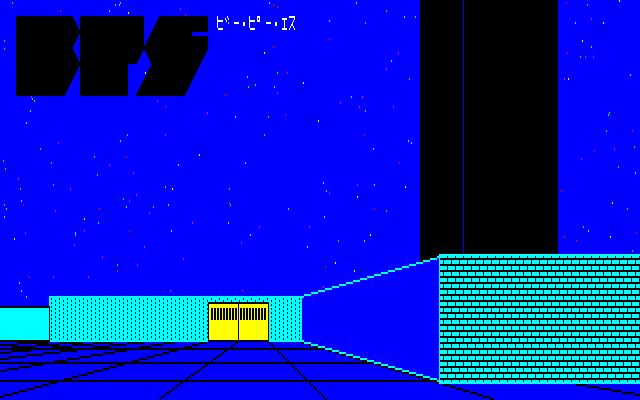

"Black Onyx for NEC PC 88 (hardware Japanese of 8 bits)"

"The Original Team of B.P.S during the development of Black Onyx in 1984"
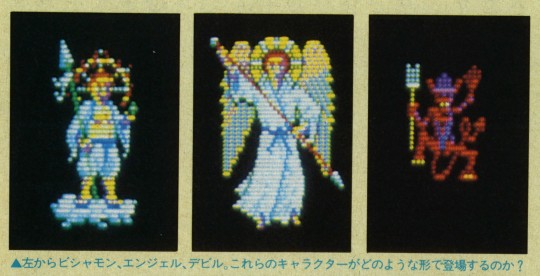

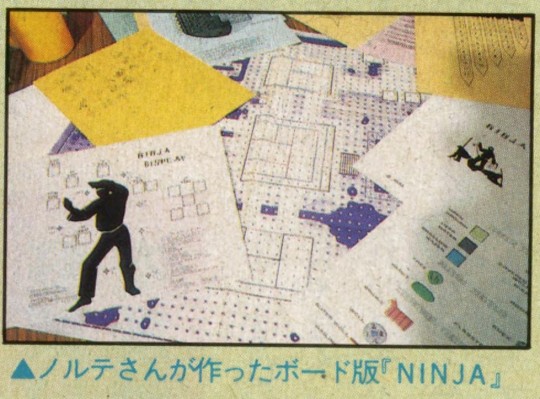
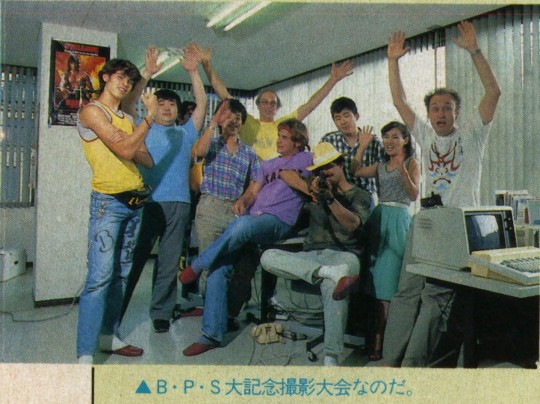
"Bullet Proof Software Office in 1984, the screenshots are of a Japanese Magazine called Beep! about videogame, 1984 which they worked on in Black Onyx's Third chapter, showed GDD and Sprite Editor that was unreleased". (source by VGDenetsu)
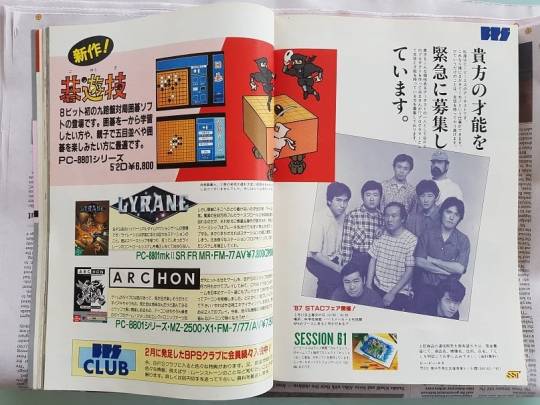

B.P.S Club Ad, show the next game for PC 88 and Famicom like: -MicroGo1 (1987 developed by B.P.S for Famicom) is a Go game -Archon (they were the publisher for the PC 88/FM 77 version in 1986) -Lyrane (they were the publisher for the PC 88/FM 77 version in 1986 and 1987)
Tetris, From Russia with Love:
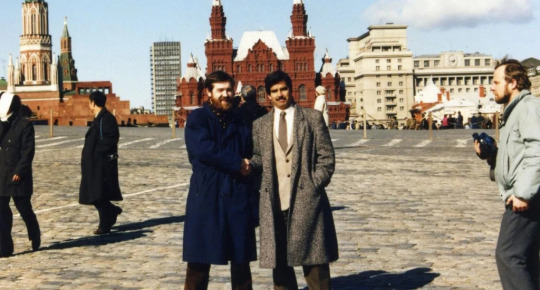
I suggest you check the great documental: "From Russian with Love" created by BBC, but I will try to resume the story: Axeley Pajitnov's 1985 program Tetris his Electronika 60 in the Science Sovietic Academy of Moscu during the URRS, his creation did not have the proprietary right concept, the game was spread all over Europe. The game quickly arrived on different PCs until you reached a Computation Exposition in Europe. A man called Robert Stein from Andromeda Software was interested in Tetris, and he wanted to contact Axeley Pajitnov, but the Soviet government was awarded the game to negotiate with any wanted of getting the rights of commercialization for selling Tetris via Elorg, Ministry of Technology of the government.
Elorg sent the first step for negotiating to Robert Stein, but him believed that was a contract for the right of commercialization, he started selling the rights commercialization to Mirror Soft (a British Company created by the Multibilionaire Robert Maxwell), This company sold the rights to Spectrum Holobyte (game developer and Publisher in the USA) that this sold the rights to Atari Tengen (for Arcade and Console) and finally Atari Tengen sold the rights to Henk Roger from Bullet Proof Software for can sell Tetris for Famicom, during a CES of 1987.
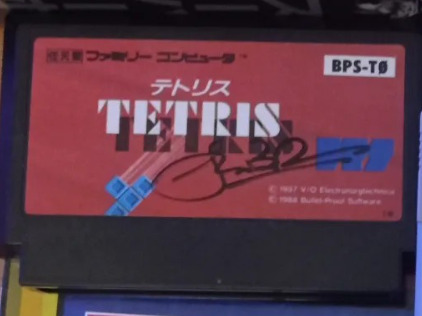
"This was the first version of Tetris for Famicom released in 1987, that didn't same NES version released in 1989 was developed by Nintendo Japan". But Elorg didn´t know about the commercialization of Tetris in anything platform until 1988, when they saw the different Tetris versions on PC. Elorg contacted Robert Stein because he traded the rights without Elorg's permission., while Mirror Soft at the same time they wanted the rights to Tetris, and Henk Roger was contacted by Hiroshi Yamauchi because Nintendo they worked on a new Console Portable: Game Boy. Henk Roger, Robert Stein, and Kevin Maxwell made a trip to URRS, to negotiate the complete rights of Tetris, without knowing each one traveled with the same intention, was a legal fight and very bureaucratic, and this scaled to the KGB, Kremlin, and finally to the Mijain Gorbachov, but Henk Roger got the exclusive rights for develop and sell the game for Game Boy and VideoGame Home Console. With the rights to the Video Game Home Console, They can stop and cancel the version of Atari Tengen for NES, obviously, Atari demanded Nintendo in a Legal Trial for the rights to sell the Home Console (at this moment ATARI made a re-engineer inverse to the NES for manufacture own NES Cartridge without permission of Nintendo they had another legal trial).

In 1989, Tetris was sold with the release of the Game Boy, which was developed by Bullet Proof Sofware, It was a success for Nintendo and BPS, but Axeley Pajitnov at all times earned nothing from the profits of his creation, Elorg and URRS kept the profits until 1996 when Russia change to the capitalist system and rights of creation were delivered for his creator.
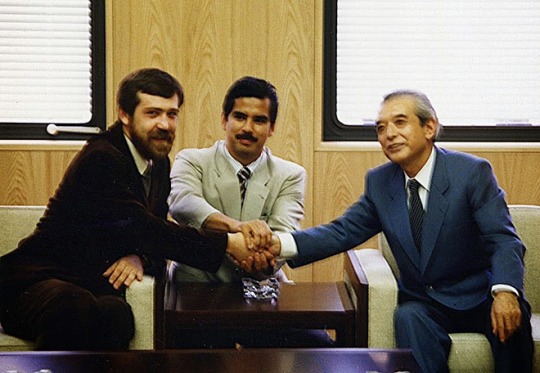
Axeley Pajitnov, Henk Roger and Hiroshi Yamauchi (President of Nintendo Kyoto in 1989)
Testris and the Friendship:
Axeley Pajitnov wanted to work as a Game designer and work in the game industry, and his best friend could help. Bullet Proof Software since 1989, opened a filial of development in Redmond Washington (very near the Nintendo of America office), Axeley Pajitnov could exit to the URRS, and traveled to the United States with his family. His first work in B.P.S was: - WellTris - FaceTris - HaTris - Knight Moves - PipeDream ( based on the PC game of Lucas Film Game) - Yoshi Cookies (based on an unreleased arcade game of HomeData) Later Pajitnov worked at Microsoft and in 1996 he founded with Henk Roger, The Tetris Company.
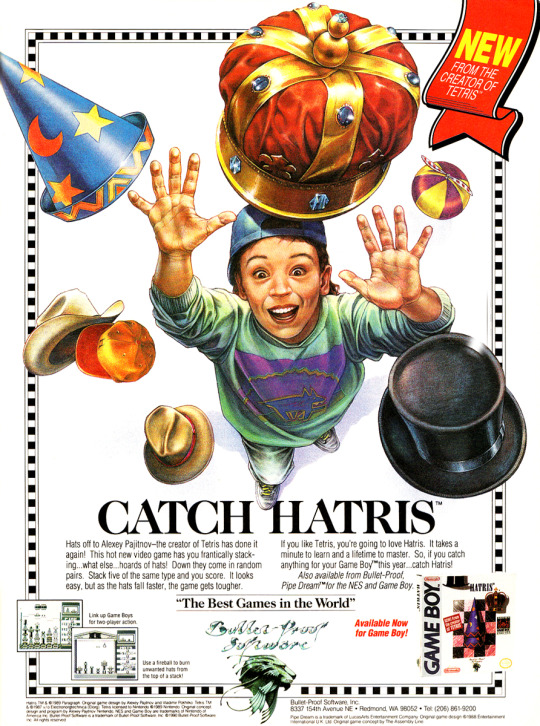

"Hatris and PipeDream was the next game designed by Axeley Pajitnov after Tetris, Facetris & Welltris"

"An article from 1990 by GamePro Magazine (Review of Hatris & Pipe Dreams Puzzle Games for Game Boy)"

"Club Nintendo Magazine, CES of 1993"


"Ads of some Game of Bullet Proof Software".
2 notes
·
View notes
Text
youtube
Roger Dean is a UK artist and his iconic art has featured on a huge range of products over the years. His art featured hugely on many Psygnosis games in the 80s and 90s. He also designed the 1997 Tetris logo along with Bullet Proof Software's logo.
If you've never seen his art check out his official website: https://www.rogerdean.com
But games like Shadow of the Beast wouldn't have been the same without him. In a recent interview on his YouTube Channel he spoke with Alexey Pajitnov & Henk Rogers about the recent Tetris movie.
1 note
·
View note
Text

The Magical Land of Wozz (1995, Bullet Proof Software). English translation patch by Nightcrawler's Translation Corporation.
#The Magical Land of Wozz#Choumahou Tairiku Wozz#SNES#Super Famicom#JRPG#pixel aesthetic#pixel graphics#retro games#screenshot#gif#screencaps#Fami's junk
20 notes
·
View notes